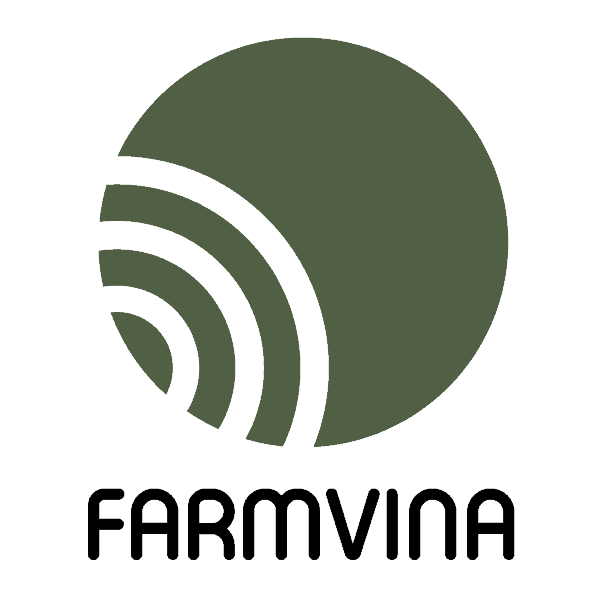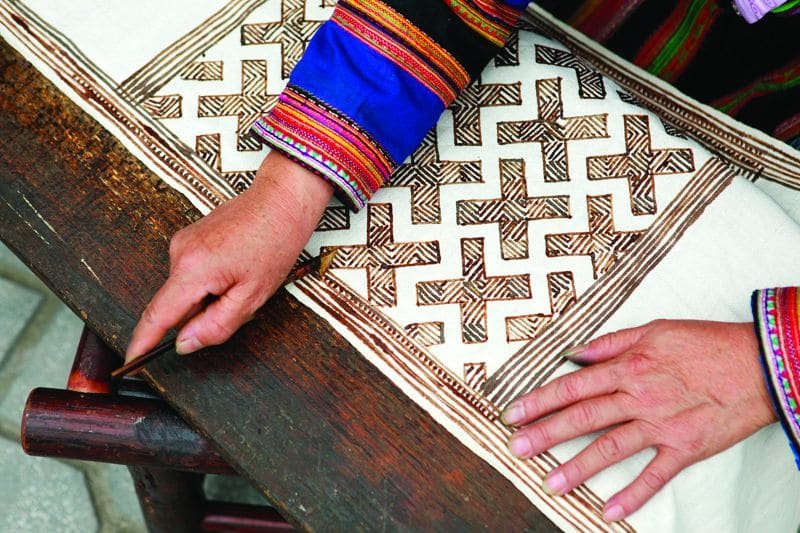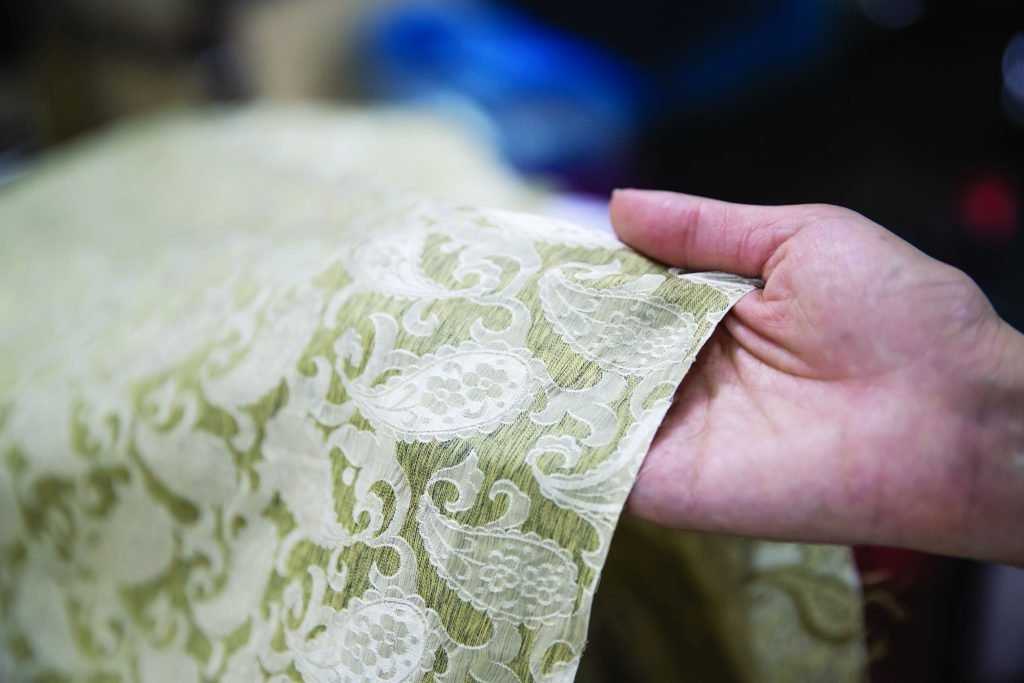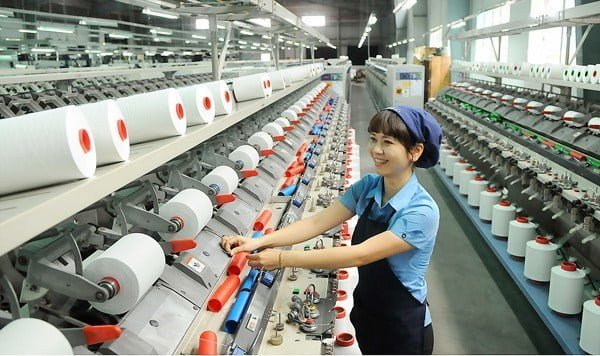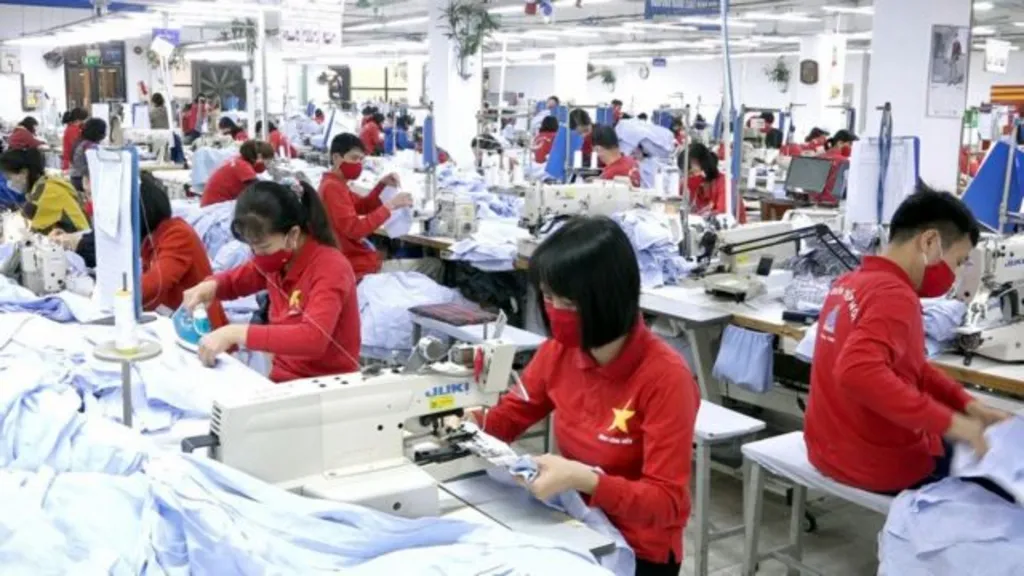The Global Appeal of Vietnamese Textiles: How Tradition Meets Innovation
Vietnamese textiles have a long and rich history that dates back thousands of years. The art of weaving and textile production has played a significant role in Vietnamese culture, serving as a means of self-expression, cultural identity, and economic prosperity.
From traditional weaving techniques to modern designs, Vietnamese textiles have evolved over time while still preserving their unique heritage.
Key Facts and Figures
- Global Significance: Vietnam is one of the world’s leading exporters of textiles and garments, consistently ranking within the top 5.
- Export Value: Textile and garment exports reached over $40 billion USD in 2023, making it a vital sector of Vietnam’s economy.
- Types of Exported Textiles: Includes finished garments, fabrics, technical textiles, and home textiles.
Major Export Destinations:
- United States: The largest market for Vietnamese textile exports.
- European Union: A significant and growing market, attracted to Vietnamese quality and production capabilities.
- Japan and South Korea: Long-standing crucial markets with high demand for textiles.
- China: While a competitor, China is also an important market for Vietnamese fabric exports.
- ASEAN Countries: Increasing regional trade within the ASEAN economic bloc.
Trends and Influencing Factors
- Cost-Competitiveness: Vietnam offers competitive labor costs and efficient production, making it attractive to global buyers.
- Quality and Reliability: Vietnamese textiles have a reputation for good quality and consistent production standards, building trust among international brands.
- Trade Agreements: Agreements like the EVFTA (EU-Vietnam Free Trade Agreement) and CPTPP (Comprehensive and Progressive Agreement for Trans-Pacific Partnership) open up new markets and reduce tariffs.
- Sustainability Focus: A growing emphasis on sustainable production practices and eco-friendly textiles is increasingly important to buyers.
The Art of Weaving: A Time-Honored Tradition in Vietnam
Weaving is a time-honored tradition in Vietnam, with techniques that have been passed down through generations. Traditional weaving in Vietnam involves the use of various types of looms, each with its own unique characteristics and purposes. These looms include backstrap looms, foot-treadle looms, and frame looms.
Women have played a crucial role in the art of weaving in Vietnam. They are often the ones responsible for spinning the yarn and operating the looms. Weaving has traditionally been seen as women’s work, and it has provided them with a means of income and empowerment.
Let’s break down the intricate process of Vietnamese weaving into its various steps:
Step 1: Fiber Preparation
- Types of Fiber: Vietnam boasts a rich variety of natural fibers for weaving.
- Silk: Derived from silkworms, creates luxurious fabrics.
- Cotton: A common choice for its softness and breathability.
- Hemp, Flax, Bamboo: Sustainable fibers adding unique textures.
- Processing:
- Spinning: Fibers are twisted into yarn, either by hand or with spinning wheels.
- Dyeing: Yarns may be dyed using natural plant-based dyes or synthetic colors.
Step 2: Setting Up the Loom
- Types of Looms:
- Backstrap Loom: A simple and portable loom often used in ethnic minority communities.
- Frame Loom: Larger looms for creating wider fabrics.
- Modern Jacquard Looms: For complex patterns and mass production.
- Warping: The warp threads (lengthwise threads) are stretched tightly across the loom.
Step 3: The Weaving Process
- Shuttle and Weft: The weft threads (crosswise threads) are woven through the warp threads using a shuttle.
- Creating Patterns:
- Plain Weave: Basic interlacing, creating a sturdy fabric.
- Twill Weave: Diagonal patterns for a textured effect.
- Brocade: Extra weft threads are added to create raised, intricate designs.
- Ikat: Dyed threads are strategically placed in the warp to form patterns as the cloth is woven.
Step 4: Finishing and Embellishment
- Removing from the Loom: The completed fabric is carefully cut off the loom.
- Washing and Fulling: The fabric may be washed and treated to soften and enhance its drape.
- Embroidery and Detailing: Additional embellishments are sometimes added by hand using embroidery techniques or decorative beads.
The Role of Silk in Vietnamese Textiles: A Symbol of Luxury and Elegance
Silk has always held a special place in Vietnamese culture and is considered a symbol of luxury and elegance. The history of silk production in Vietnam can be traced back to the 2nd century BC when the country began cultivating silkworms and producing silk.
Different types of silk are used in Vietnamese textiles, including raw silk, tussah silk, and mulberry silk. Each type has its own unique characteristics and is used for different purposes. Mulberry silk, which is produced from silkworms fed on mulberry leaves, is the most common type used in Vietnamese textiles.
| Feature | Traditional Silk Production & Use | Modern Applications of Silk |
|---|---|---|
| Source | Silkworm cultivation in dedicated villages | Combination of traditional villages and imported silk |
| Production Methods | Hand-reeling, hand-weaving, and natural dyeing | Blending traditional and modern techniques (machine spinning, power looms) for greater efficiency |
| Types of Fabric | Lush brocades, shimmering taffetas, and delicate gauzes | Wider variety including satin, crepe, chiffon for contemporary tastes |
| Designs & Motifs | Traditional patterns with symbolic meanings (dragons, phoenixes, nature scenes) | Both classic designs and modern interpretations for fashion and interior decor |
| Usage (Historically) | Garments for nobility and the wealthy, ceremonial textiles | High-end fashion, áo dài (traditional Vietnamese dress), accessories, interior decor items (cushions, curtains, etc.) |
| Symbolism | Luxury, elegance, status, a connection to heritage | Continues to represent beauty, quality, and a refined aesthetic |
The Evolution of Vietnamese Textiles: From Traditional to Modern Designs
Vietnamese textiles have evolved over time, influenced by Western fashion trends and the changing tastes of consumers. The introduction of Western fashion in Vietnam has had a significant impact on the design and production of textiles.
Traditional Foundations
- Natural Fibers: Silk, cotton, hemp, and other locally sourced materials were the foundation of textile creation.
- Symbolic Motifs: Designs drew inspiration from nature (flowers, birds, landscapes), mythology (dragons, phoenixes), and geometric patterns holding cultural significance.
- Regional Variations: Each region and ethnic minority group developed distinct weaving and dyeing techniques, resulting in a rich tapestry of textile traditions.
- Practical and Ceremonial: Textiles served everyday needs like clothing and household items along with playing a vital role in rituals, festivals, and marking social status.
Factors Driving Change
- Industrialization and Globalization: The introduction of mass-produced fabrics, synthetic dyes, and mechanized looms transformed textile production and accessibility.
- Shifting Aesthetics: Exposure to Western fashion trends and a growing urban consumer base fueled the desire for greater variety and modern designs.
- Preservation and Revival: Renewed interest in traditional craftsmanship led to efforts to preserve techniques and motifs, incorporating them into contemporary forms.
Characteristics of Modern Designs
- Bolder Colors: A wider palette of synthetic and natural dyes allows for vibrant, eye-catching colors beyond the traditional earthy tones.
- Contemporary Patterns: Abstract patterns, geometric shapes, and stylized florals find increasing favor alongside traditional motifs.
- Innovative Uses: Textiles are incorporated into non-traditional products like modern fashion apparel, accessories, and home décor with a global appeal.
- Fusion Fashion: Designers experiment with blending traditional fabrics and techniques with contemporary silhouettes and cuts for a unique aesthetic.
The Coexistence of Tradition and Modernity
- Continued Importance of Traditional: Traditional textiles remain treasured for cultural ceremonies, special occasions, and as artistic heirlooms.
- Valuing Artisanship: Handwoven, naturally dyed pieces are prized for their artistry and sustainability, particularly in high-fashion and interior design circles.
- Balancing Act: Vietnamese textile producers and designers navigate the balance between preserving traditional heritage and catering to evolving styles and market demands.
In recent years, there has been a resurgence of interest in traditional Vietnamese textiles, with designers incorporating traditional motifs and techniques into modern designs. This fusion of traditional and modern elements has created a unique style that is both timeless and contemporary.
The Importance of Natural Dyes in Vietnamese Textiles: A Sustainable Approach to Fashion
Vietnamese textiles are known for their vibrant colors, which are achieved through the use of natural dyes. Natural dyes are derived from plants, minerals, and insects, and they offer a sustainable alternative to synthetic dyes.
The use of natural dyes in Vietnamese textiles has several benefits. They are non-toxic and biodegradable, making them environmentally friendly. Natural dyes also create unique and rich colors that cannot be replicated by synthetic dyes.
The Global Recognition of Vietnamese Textiles: From Local Markets to International Runways
Vietnamese textiles have gained recognition in the global fashion industry, with designers and consumers alike appreciating their unique craftsmanship and cultural significance. International designers have incorporated Vietnamese textiles into their collections, showcasing them on runways around the world.
The rise of Vietnamese textiles in the global fashion market has had a positive impact on the local economy. It has created new opportunities for artisans and weavers, providing them with a platform to showcase their skills and generate income.
The Impact of Vietnamese Textiles on the Fashion Industry: A Fusion of East and West
Vietnamese textiles have had a significant influence on Western fashion, with designers incorporating traditional Vietnamese motifs and techniques into their designs. This fusion of Eastern and Western elements has created a new aesthetic that is both innovative and culturally diverse.
Vietnamese textiles have also played a role in promoting cultural diversity in the fashion industry. By incorporating traditional motifs and techniques into their designs, designers are celebrating and preserving Vietnamese culture while also promoting cross-cultural exchange.
The Role of Technology in Vietnamese Textiles: From Handmade to Machine-Made Production
Technology has played a significant role in the production of Vietnamese textiles, with many traditional weaving techniques being replaced by machine-made production. While machine-made production offers several benefits, such as increased efficiency and productivity, it also poses challenges to traditional weaving techniques and the livelihoods of artisans.
The use of technology in Vietnamese textile production has allowed for mass production and lower costs, making textiles more accessible to a wider audience. However, it is important to strike a balance between embracing technology and preserving traditional weaving techniques to ensure the sustainability of the industry.
The Future of Vietnamese Textiles: Preserving Tradition while Embracing Innovation
The future of Vietnamese textiles lies in preserving traditional weaving techniques while embracing innovation. It is essential to find ways to incorporate technology into textile production without compromising the unique craftsmanship and cultural heritage that make Vietnamese textiles so special.
Innovation in design and production techniques can help Vietnamese textiles stay relevant in the global fashion industry. By combining traditional techniques with modern technology, designers can create new and exciting designs that appeal to a wider audience.
The Social and Economic Importance of Vietnamese Textiles: Empowering Local Communities
Vietnamese textiles play a crucial role in supporting local communities and empowering artisans. Textile production provides income and employment opportunities for many individuals, particularly women in rural areas.
The impact of Vietnamese textile production extends beyond the local economy. It also promotes cultural preservation and sustainability by valuing traditional craftsmanship and using natural materials.
The Enduring Beauty and Timelessness of Vietnamese Textiles
Vietnamese textiles have a timeless beauty that transcends trends and fads. They are a testament to the rich cultural heritage of Vietnam and the skill and craftsmanship of its artisans.
Preserving traditional weaving techniques while embracing innovation is crucial for the future of Vietnamese textiles. By doing so, Vietnamese textiles can continue to inspire and captivate audiences around the world, promoting cultural diversity and sustainability in the fashion industry.
Originally posted 2024-01-29 09:20:57.
